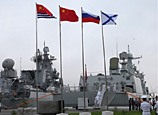
Military buildup
Japan's defense budget for the 2013 fiscal year, approved by the Abe cabinet in January, rose 0.8 percent to 4.68 trillion yen ($51.7 billion), the first increase in the past 11 years.
Meanwhile, the Japanese Defense Ministry is considering purchasing two Aegis-quipped destroyers to bring its total number of the missile-defense vessels to eight, in the light of the continuing threats from the DPRK, Japan's Kyodo News reported.
Zhou Yongsheng, an expert on Japanese studies at China Foreign Affairs University, said Tokyo has chosen to hype the supposed threat from China as "a bargaining chip" to neutralize domestic resistance to its military expansion plan.
Japan has lately strengthened monitoring operations on the East China Sea with more satellites, and "it has not changed its intention to rein in China", Zhou warned.
"Recently, Japan has frequently hyped China's 'threat' to deliberately inflame tensions, and some political forces take it as an opportunity to campaign for a military buildup and war-time preparations," said Hua, the Foreign Ministry spokeswoman.
Japan's maritime Self-Defense Force currently deploys four Aegis destroyers that are capable of intercepting a ballistic missile with the sea-based Standard Missile-3, and is renovating two other Aegis destroyers to be ready by 2018.
Japan announced in 2010 that it was shifting from a static defense, which rests on mobilization, to a "dynamic defense" that requires more agile forces, able to operate in the air and maritime regions bordering Japan.
The latest white paper endorsed the traditional US-Japan military alliance, but it also expressed concerns over Washington's decision to further cut its own defense budget, asking Tokyo to shoulder more of the financial burden.
Japan had made efforts to strengthen the military bond by holding a summit between US President Barack Obama and Japanese Prime Minister Shinzo Abe, and meetings between their defense ministers this year, the annual report said.
The Japan-US defense cooperation has covered all fields, including joint drills, cooperative development of SM-3 block IIA ballistic missile defense and placing US TPY-2 radars in Japan.
"Although Tokyo has been seeking greater independence in the defense arena, its defense independence remains limited in the framework of US-Japan military alliances," said Wang of the CASS.
The US is offering training for a 700-strong force for ground troops from Japan's SDF, who have been on joint US-Japan military exercises, the white paper said.
 |
















 Severe rainstorms batter SW China quake-hit regions | Pedestrians fall into river after bridge collapses
Severe rainstorms batter SW China quake-hit regions | Pedestrians fall into river after bridge collapses


![]()
